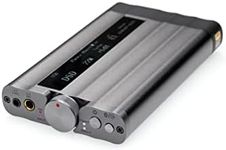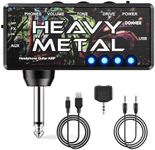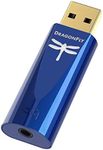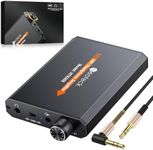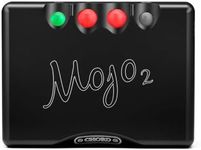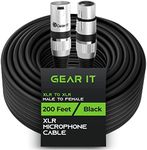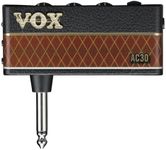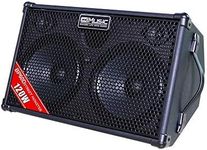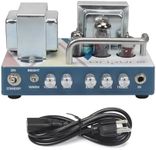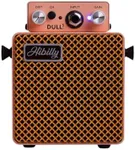Buying Guide for the Best Headphone Amplifiers
Choosing the right headphone amplifier can significantly enhance your listening experience by providing better sound quality and more power to drive your headphones. When selecting a headphone amplifier, it's important to consider several key specifications to ensure you get the best fit for your needs. Understanding these specs will help you make an informed decision and find an amplifier that complements your headphones and listening preferences.Power OutputPower output refers to the amount of power the amplifier can deliver to your headphones. This is important because different headphones have varying power requirements. Low power output (under 100mW) is suitable for efficient headphones with low impedance (under 32 ohms). Medium power output (100mW to 500mW) is ideal for headphones with moderate impedance (32 to 100 ohms). High power output (over 500mW) is necessary for high-impedance headphones (over 100 ohms) that require more power to perform optimally. Choose an amplifier with a power output that matches the impedance of your headphones to ensure they are driven properly and deliver the best sound quality.
Impedance MatchingImpedance matching is the process of ensuring that the output impedance of the amplifier is compatible with the impedance of your headphones. This is important because a mismatch can result in poor sound quality or even damage to your headphones. Amplifiers with low output impedance (under 2 ohms) are generally suitable for most headphones, providing a clean and accurate sound. If you have high-impedance headphones, look for an amplifier with an output impedance that is at least one-eighth of the headphone impedance. This will help maintain sound quality and prevent distortion.
Total Harmonic Distortion (THD)Total Harmonic Distortion (THD) measures the amount of distortion an amplifier introduces to the audio signal. Lower THD values indicate cleaner and more accurate sound reproduction. THD is usually expressed as a percentage, with values under 0.1% considered excellent for high-fidelity audio. If you are an audiophile or someone who values pristine sound quality, aim for an amplifier with a THD of 0.05% or lower. For casual listeners, a THD of up to 0.5% may still provide satisfactory sound quality.
Signal-to-Noise Ratio (SNR)Signal-to-Noise Ratio (SNR) measures the level of the desired audio signal compared to the level of background noise. A higher SNR indicates a cleaner and clearer sound, as there is less background noise interfering with the audio. SNR is typically measured in decibels (dB), with values above 90dB considered good for most listening situations. For critical listening or professional use, look for an amplifier with an SNR of 100dB or higher to ensure the best possible sound quality.
Gain ControlGain control allows you to adjust the amplification level to match the sensitivity of your headphones. This is important because it helps you achieve the desired volume without introducing distortion or noise. Amplifiers with adjustable gain settings (low, medium, high) provide more flexibility and can accommodate a wider range of headphones. If you have multiple pairs of headphones with varying sensitivities, an amplifier with adjustable gain control will allow you to fine-tune the amplification for each pair, ensuring optimal performance.
PortabilityPortability refers to the ease with which you can carry and use the amplifier on the go. This is important if you plan to use your amplifier with a portable audio player or while traveling. Portable headphone amplifiers are typically smaller, battery-powered, and lightweight, making them easy to carry. Desktop amplifiers, on the other hand, are larger and designed for stationary use, often providing more power and better sound quality. If you need an amplifier for use at home or in a studio, a desktop model may be more suitable. For on-the-go use, look for a compact and portable amplifier.
